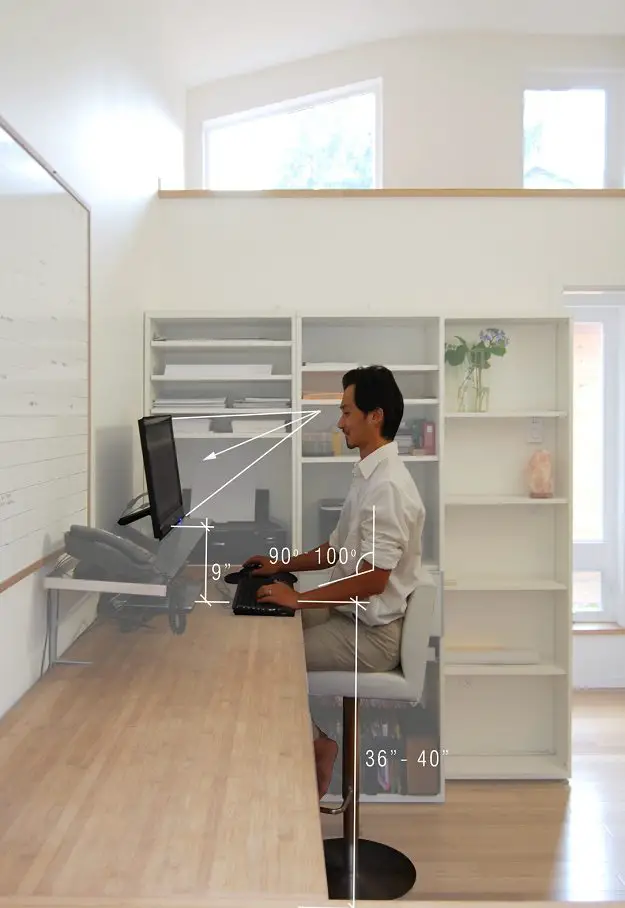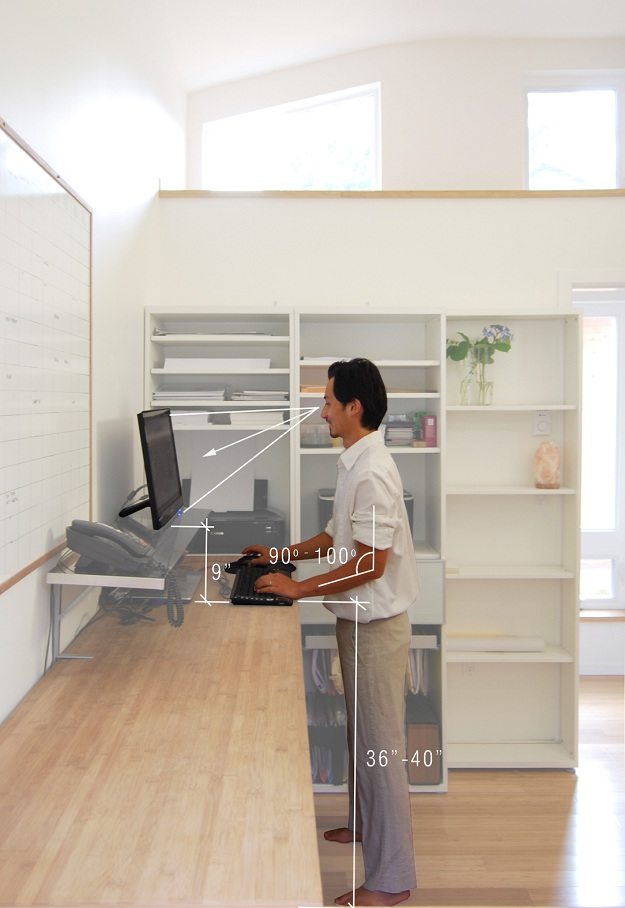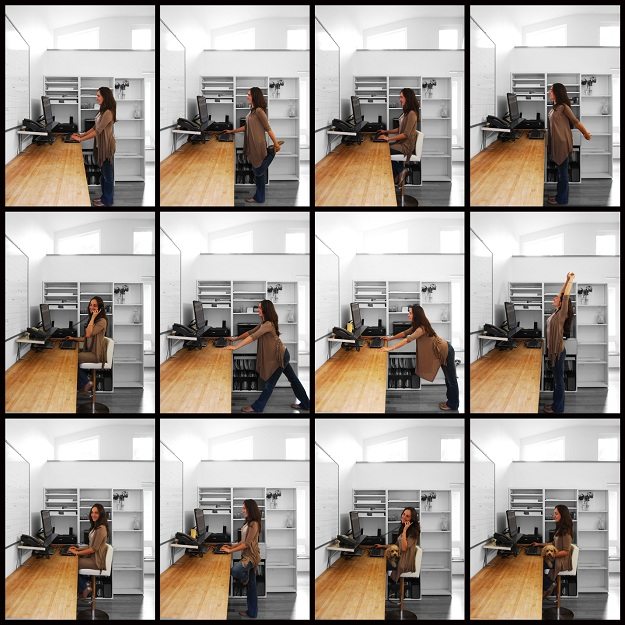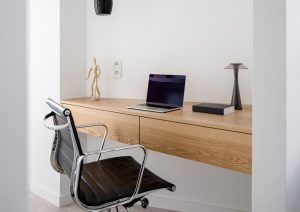The shift from an agricultural/industrial economy to a technological economy has greatly expanded the options available to us in terms of work and lifestyle, and yet we struggle with the impact that these sedentary jobs are having on our bodies.
“People who ‘sit down all day’ are the members of the working population most susceptible to back pain issues. (…) Researchers found that 59% of the respondents with sedentary jobs and lifestyles are more at risk of having back issues than people who do a great deal of lifting and carrying in their positions.”1
Many professions today rely on the use of computers to perform their work and many people can attest that spending 8 hours per day sitting in front of a computer can feel rather unnatural to our bodies. The results of forcing our bodies into extended periods of sitting often results in slouching, crouching over small screens, putting too much weight on one side of our bodies, and the cultivation of all sorts of poor postural habits which become so deeply imprinted in our bodies that they become difficult to overcome overtime. I’ve suffered from lower back pain for many years, while studying and working in architecture. In talking to my physiotherapist over many visits throughout the years, I came to realize that no amount of exercise done before or after 8 hours of poor postural sitting could fully overcome the detrimental effects that this amount of sedentary activity was having on my body.
Our bodies want to move freely, while our minds also want to be free to create and engage with the work on our brilliant computer screens. But our minds cannot work with ease when our bodies are in pain. “Low back pain is the second most common cause of disability among American adults and a common reason for lost days [at work].” 2 Then how can we reconcile the demands of minds and bodies within each hour of our day without having to compromise one for the other?
I believe that we as human beings are all meant to live fulfilled lives, and that our minds and our bodies both deserve to be nurtured and nourished. As a designer, I also believe that we can initiate changes in our environment to mirror the changes that we want to see in ourselves. So I began to look at how I could restructure my day-to-day activities and the way my office space was set up in order to support better postural habits, to give more balance to upper and lower body utilization, while also giving my body greater range of motion throughout the day. At the same time, I wanted to explore how this idea could be made so simple that anyone could also implement it in their own work spaces.
In talking to a dear client about the design of a co-shared office space one day, we got to the subject of standing work spaces. We all felt that the ability to alternate between sitting and standing while working at a computer offered great potential to free the body from unnatural extended periods of sitting. We brainstormed what solutions for standing/sitting desks were available out there. A solution that seemed to do the job was a desk that could move from sitting height to standing height with the press of a button. However, the solution we were after needed to be cheaper and simpler, and preferably without so many “moving parts”.
We contemplated the old drafting tables and how they had solved many ergonomic issues related to the sedentary profession of a draftsmen, including the ability to sit or stand while working, and to easily alternate between the two. When drafting moved from the pencil to the computer it was as if all the ergonomic knowledge we had gained from decades of using drafting tables was thrown out the window overnight. And we were back to just sitting. Then with the invention of the laptop we gained great flexibility to take our work anywhere with us, but then we were not only just sitting but also slouching over a tiny screen. And our bodies became very unhappy. But we kept telling our bodies to be quiet so we could focus on the wonders on this tiny screen. Until our bodies had to scream, in the form of back pain or some other discomfort, “Please stop and pay attention to me!” So here we stand with our brilliant minds and dysfunctional bodies trying to push through another day, but for how long?
For me it had been long enough, too long to be dismissing my body. The desire in our office was to set up our work stations so we could easily alternate between sitting and standing throughout our day and to allow our bodies more range of movement while our minds could remain focused on the work. The solution that came to us was quite simple – to start by raising the table to standing height. The sitting could be more easily accommodated with an adjustable stool, as in the “drafting table” times. Since the purpose was to alternate between sitting and standing and not to spend too long in any one position, the stool became more of a temporary place to rest rather than all-day support, which dispensed it from needing to have fancy ergonomic features. Also, with this simple set-up, there are no moving parts. The only “moving part” is the person, which not only reduces the cost and maintenance of the office setup itself, but more importantly, it introduces beneficial movement to the body.

It was very important for this system to allow for heights and angles to be customized to each person’s body. We opted for table legs that could be adjusted in height and we experimented with lowering and raising the table height for a couple weeks until we found the height and angles that felt optimum to our bodies.
However, we still had another issue to address – laptops. Because keyboard and screen are integrated in a laptop, ergonomically we could not get the angles and heights correct for both the keyboard and the screen. It became clear to us that working on a laptop all day was not going to help improve our posture. But we love laptops! We love having all the computer power we need in portable form so that we can take our work anywhere with us, from client meetings to long trips, and we were not willing to give up that freedom and flexibility. Not to mention that in the eventual case of power failure, the battery in that laptop is gold!
But we realized that we could still have it all, the flexibility of a laptop and beautifully aligned spines, by simply plugging a big monitor and a keyboard to our laptops when we were working in the office, which for us is most of the time. So we raised the monitor screen to our eye level on a secondary table stand, so that our spines could stay straight and our gaze slightly downwards as it falls most naturally. The keyboard at table height kept our elbows at the optimal 90 to 100 deg. 2 when either sitting or standing, allowing us to type or use the mouse with ease. And the laptop could fit neatly behind the keyboard and underneath the screen stand, making efficient use of table space.

All the parts used in the setup this office system are readily available “off-the-shelf” items. Adjustable table legs, 9″ high metal bracket and 12″ deep shelf to create a stand for the monitor. Most monitors have height adjustment mechanisms to fine tune the screen height to each person’s eyesight level. For the table top we used 1″ thick bamboo plywood surface with a natural oil finish. Any tabletop surface could be chosen for this application based on individual preferences.
Our desire was to empower ourselves and others to take charge of our work environments and to start honoring our bodies as much as we honor our minds. Because mind and body both work better when they are in harmony. Bringing our minds and bodies back to balance has to start with each one of us, and in every aspect of our lives! Because if we don’t honor our minds and our bodies equally, no one else will.

Ana can be contacted at design@sandrinleung.com
If you found this article interesting, you really should read “Why Sitting is Killing You!”
1 “Jobs Most at Risk from Back Problems” 2006 http://www.chiropracticresearch.org
2 “In Praise of Good Posture” 2011 Rosalind Ferry






